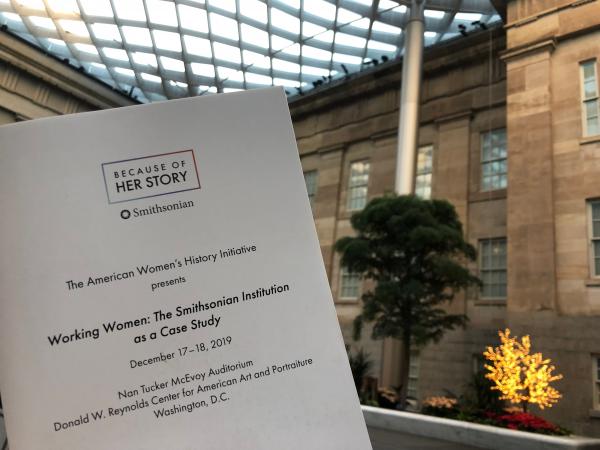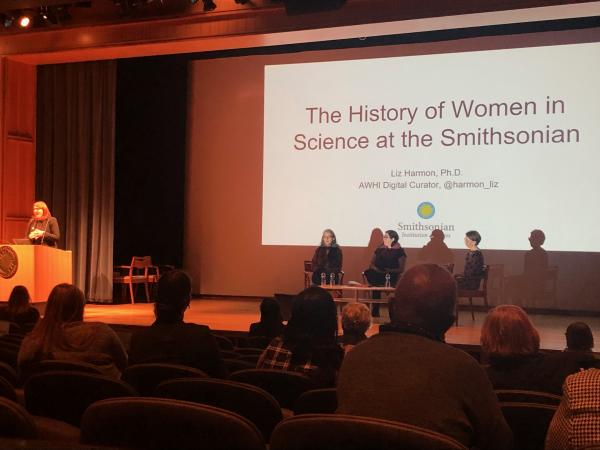Last week, on December 17 and 18, folks from across the Smithsonian and the public gathered to listen, learn, and discuss at "Working Women: The Smithsonian Institution as a Case Study," a two-day symposium, organized by the American Women’s History Initiative. Presenters celebrated women working at the Smithsonian and explored how they represent the broader experience for American women over the last 150 years. With a packed schedule, there’s a lot of ground to cover. If you missed it, don’t worry because I’ve got your recap and highlights from the Archives!

Day One:
The Archives’ own Pamela Henson, institutional historian and Smithsonian employee since 1973, gave the first of three keynote addresses, titled "Women of the Smithsonian: A New View from 1846 to 2019." Henson provided a brief overview of women throughout the history of the institution, from the ways in which women gained employment, or even unpaid work, in the early years of the Smithsonian to the breadth of female leadership today. Henson invited the audience to consider, "Why don’t we know more about these women?" Following her talk, women in leadership from across the institution held a roundtable discussion, "Working Women: Establishing a Legacy of Leadership at the Smithsonian," which included a vibrant exchange between women directors past and present.
Day Two:
We started day two with Kelly Navies, museum specialist in oral history for the National Museum of African American History and Culture, who opened the Wednesday morning sessions with "How Oral History Illuminates the Life and Works of Women at the Smithsonian: The Story of Jeannine Smith Clark." Navies reminded us how oral history is linked to women’s liberation. In the morning sessions, we had another representative from the Archives, photo archivist Marguerite Roby. In her talk, "Setting the Stage: Louisa Bernie Gallaher and Frances Benjamin Johnston," Roby showcased two early women Smithsonian photographers. Through meticulous research, Roby found that Gallaher contributed a vast body of work to the Smithsonian, but, until recently, was largely uncredited. While Gallaher self-identified as a photographer, Roby noted she was labeled as "clerk from the beginning to the end of her career." Stay tuned for more on Roby’s work!

Fath Davis Ruffins, curator at the National Museum of American History, served as the final keynote speaker on Wednesday afternoon with her talk, "Early African Women Museum Professionals, 1970s to 1980s." The latter half of the day also included more exciting panels, including one with Liz Harmon, the American Women’s History Initiative Digital Curator at the Archives. The discussions during Harmon’s panel examined the importance of data and how it can offer a permanent impact to reverse the erasure of women in history. To that end, Harmon shared how she is compiling names of early women Smithsonian employees in science.
And that’s a wrap! Keep up with more work from Henson, Roby, and Harmon and the amazing work on women at the Smithsonian.
Related Resources
- "The Woman Behind the Camera," by Marguerite Roby, The Bigger Picture, Smithsonian Institution Archives
- "Smithsonian Women in Science," by Elizabeth Harmon, The Bigger Picture, Smithsonian Institution Archives
- "Smithsonian Women in Science in the Nineteenth Century," by Elizabeth Harmon, The Bigger Picture, Smithsonian Institution Archives
- "‘Muse of Scientific Literature’: Leila Forbes Clark," by Pamela Henson, The Bigger Picture, Smithsonian Institution Archives
- "Women’s History" tag, The Bigger Picture, Smithsonian Institution Archives
Produced by the Smithsonian Institution Archives. For copyright questions, please see the Terms of Use.

Leave a Comment